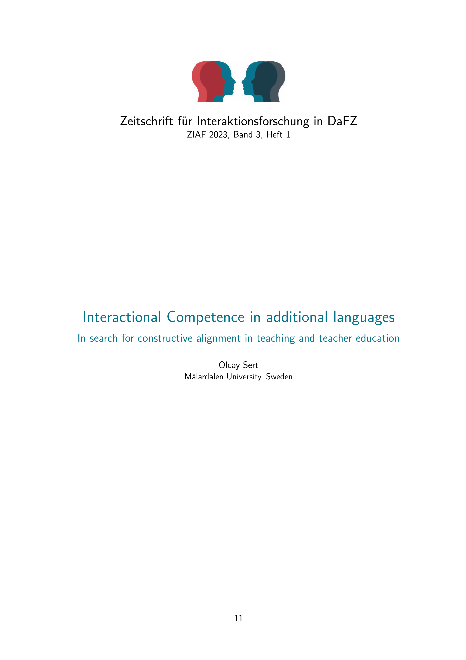Interactional Competence in additional languages In search for constructive alignment in teaching and teacher education
In this presentation, I describe interactional competence (in second languages) as a construct that spans over language learning, teaching, and teacher education, drawing on databases of learner-learner and teacher-learner interactions as well as data from teacher education contexts. I argue that in...
I tiakina i:
| I whakaputaina i: | Zeitschrift für Interaktionsforschung in DaFZ |
|---|---|
| Kaituhi matua: | |
| Hōputu: | Artikel (Zeitschrift) Daten |
| Reo: | Tiamana |
| I whakaputaina: |
Philipps-Universität Marburg
2023
|
| Ngā marau: | |
| Urunga tuihono: | Tiro pūkete Urunga tuihono |
| Ngā Tūtohu: |
Kāore He Tūtohu, Me noho koe te mea tuatahi ki te tūtohu i tēnei pūkete!
|
| Whakarāpopototanga: | In this presentation, I describe interactional competence (in second languages) as a construct that spans over language learning, teaching, and teacher education, drawing on databases of learner-learner and teacher-learner interactions as well as data from teacher education contexts. I argue that interactional competence can be a key construct for teachers and learners alike and can inform both initial and in-service teacher education. Although we need much more research to explicate what it means to be interactionally competent for a learner and a teacher, there are already some promising findings from longitudinal and collection-based conversation analytic research. The practical implications of this line of research investigations into learning, teaching, and teacher education, however, need to be compiled and discussed from the perspective of a principled approach in education (e.g. constructive alignment). I will end the presentation by pointing to future research and teacher education practices. |
|---|---|
| DOI: | 10.17192/ziaf.2023.3.1.8589 |
